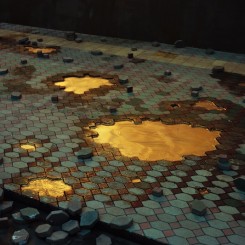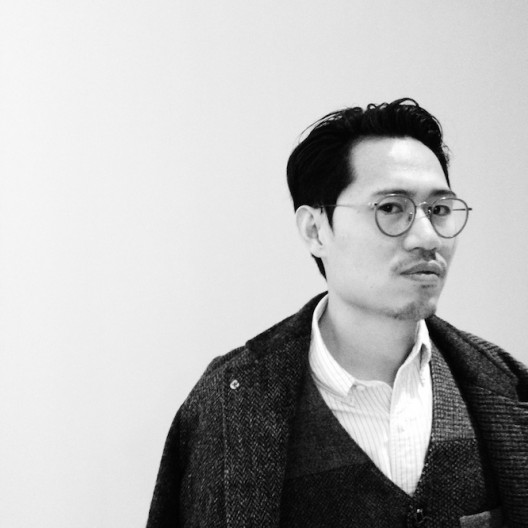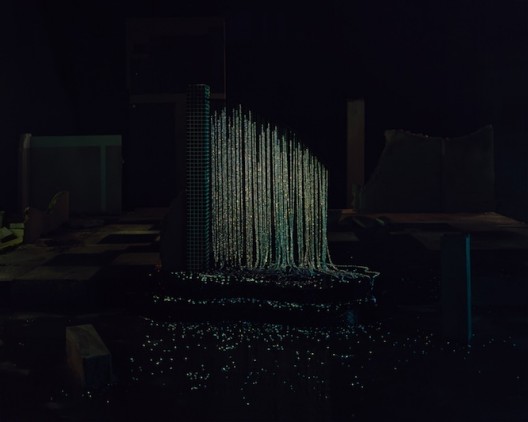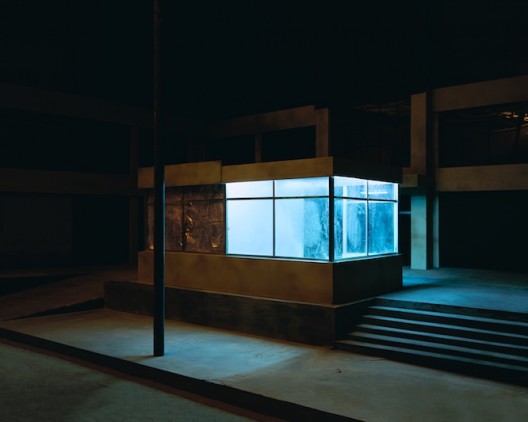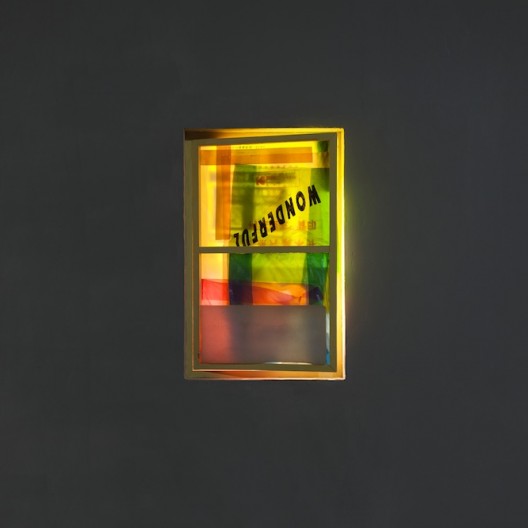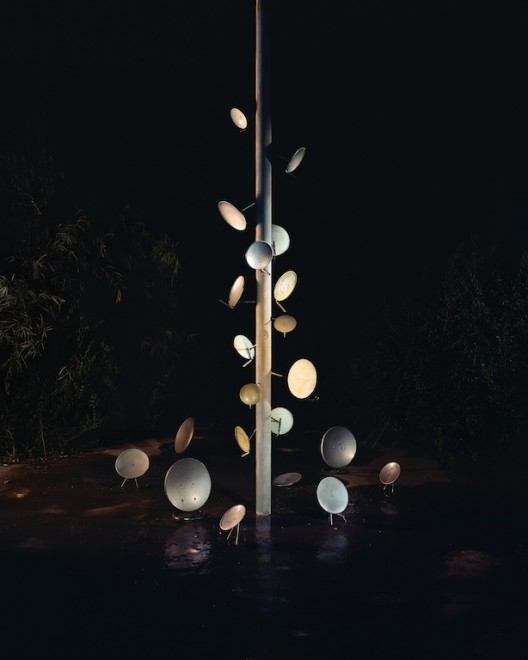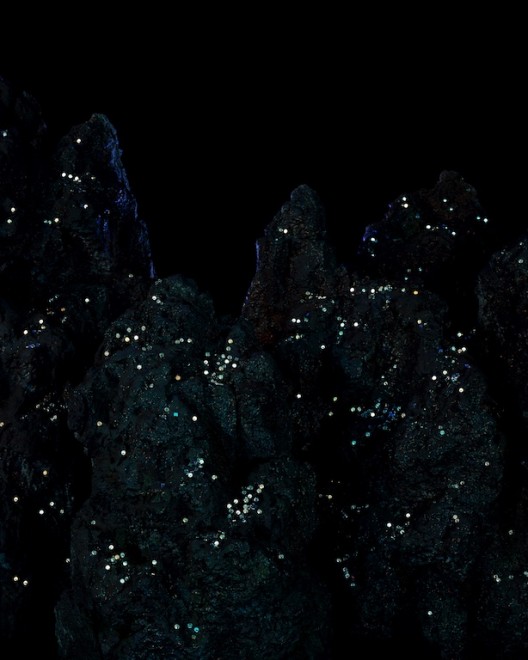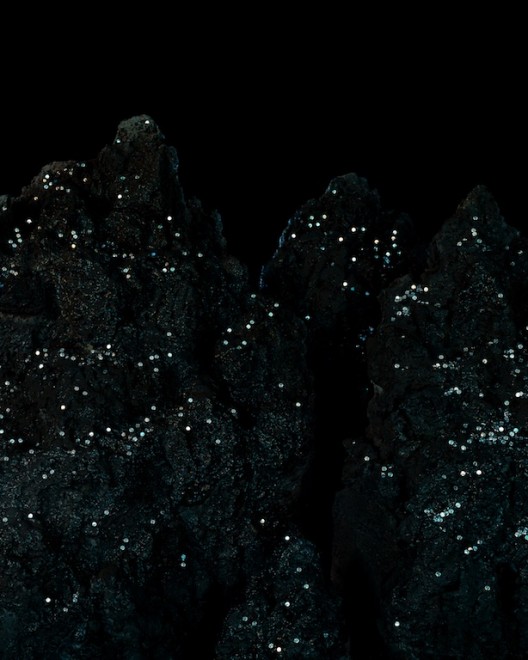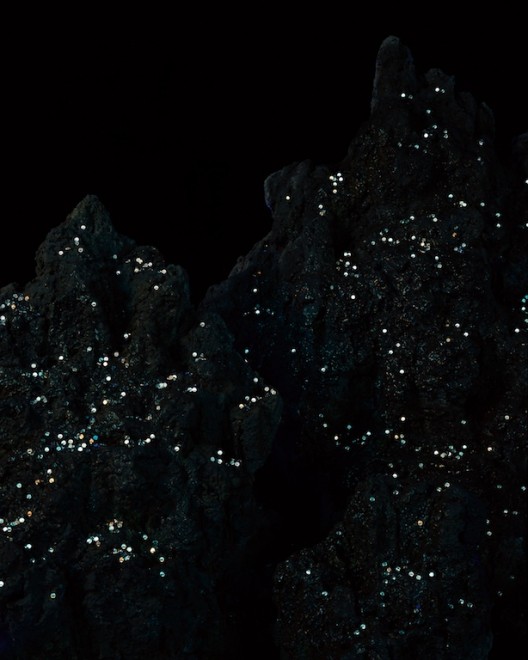ShanghART Beijing (261 Caochangdi, Airport Side Road, Chaoyang District) May 21-June 25
Sand piles up below a megaphone in front of chair, its occupant desiccated under their clothes (“Some Dust”, 2009). A folding bed is covered in mirror shards reflecting light onto a wall (“Light of the Folding Bed”, 2009). Bees mass in a room, even inside a man’s chest (“Honey in the Broadcast”, 2008). Chen Wei (b.1980, Zhejiang Province) has always looked at the peculiarity of how the individual interacts with the mass, whether listening to a radio broadcast (possibly propaganda) or dancing in a disco. While superficially there may appear to be similarities with more obviously surrealistic photography of artists like Gregory Crewdson (b.1962), Chen Wei does not dwell on the weirdness of reality but specifically of isolation, loneliness, and a want of agency, a combination that leads to a flight from the demands and impositions of the public world into a private reverie, not the subconscious maze of a nightmare but a retreat into the sanctity of a daydream.
In the wake of acute financial stress experienced across the Western world and beyond, in recent years expressions of frustration have become dramatically more visible and audible, particularly and unsurprisingly from disaffected youth in the face of established interests, whether governmental, corporate, generational or familial. But even the most incensed protests eventually lose their bit, demands satisfied or not, reforms made or not. Perhaps some protests were already emasculated, perhaps the sense of agency was an illusion anyway, or the eventual shift in the economic cycle means people have other things to be getting on with. Yes there remains the possibility to withdraw from the system, even if only temporarily in one’s own head.
In Chen Wei’s new exhibition at ShanghART in Beijing, motifs include budding TV receivers, cascading coins, and urban development. In “Fresh Paint” a gold foundation shines out from an area of broken tiling with a decorative but bland design. In “An Iron Sheet”, the silver back of a metal sheeting wall/billboard—common to China’s ubiquitous urban construction sites—has crumpled over onto a footpath, revealing a bland wall behind (behind every silver lining: nothing). In “Lost Hotel” defunct entrance steps have lost their building. In “Tree”, TV receiver dishes grow from a pole to create a disturbing “Christmas-tree”. A window covered with paper displays the word “Wonderful” in reverse—an advertisement to be seen from the street, but the room from which we look is blankly grey. In another “reverse view”, the bright lights of “New Buildings” can be seen hazily through a dirty, humid window. In “One Dream” a TV receiver dish is installed above a simple cellar-apartment window. The window is set behind a protective metal grill and faces directly onto an empty sidewalk. Inside the window is covered by an old Olympic Games poster with the words “One Dream”, mixing propaganda and privacy. Finally, three works each titled “Rockery” summon up a private garden, a philosophical space and the scattered lights of a town seen as from a plane, but the lights are mere reflections from scattered coins. All these works are still-lifes and still landscapes.
Unlike in certain early works mentioned already and the dancers at a nightclub depicted in the series “In the Waves”, there are no people. Shops and streets are empty. After being lost in the trance of the nightclub, this is the lonely, silent walk home to an anonymous apartment. In Orwell’s “1984”, the apartments of single people always had a corner where they could hide from the camera/television—couples and families didn’t need them: each member could watch the other. But single people sometimes wanted a space where they could think they were alone, unwatched. These days we might call these spaces facebook, twitter and WeChat, or even MySpace. Chen Wei’s spaces are lonely and empty. Even in a crowded disco each person might truly be an island. They represent acts of retreat from the world but they are uncertain paradises. Mere escape is not a refuge, and perhaps they doth protest too little.
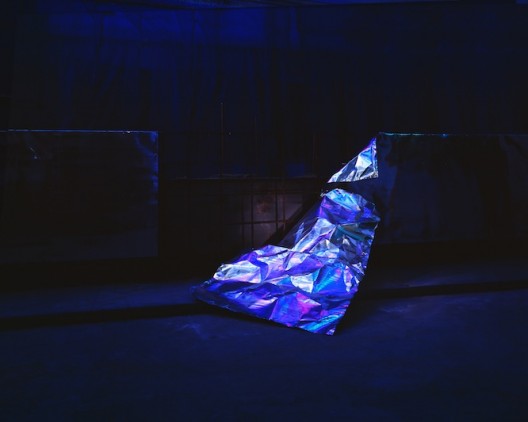
Chen Wei, “An Iron Sheet “150×187.5cm, 2015 (courtesy the artist and ShanghART)
陈维,《铁皮》150×187.5cm,2015(图片提供:艺术家和香格纳画廊)
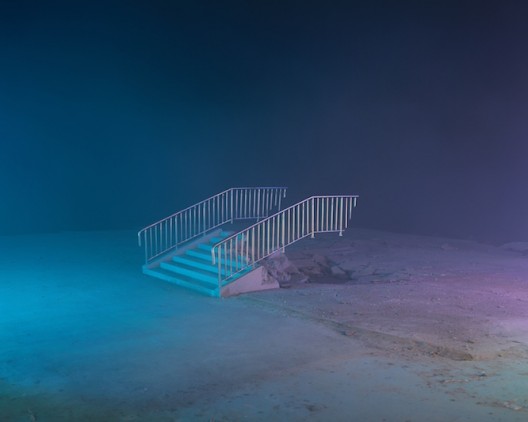
Chen Wei, “Lost Hotel”, 150×187.5cm, 2016 (courtesy the artist and ShanghART)
陈维,《洛斯特大酒店》,150×187.5cm,2016(图片提供:艺术家和香格纳画廊)
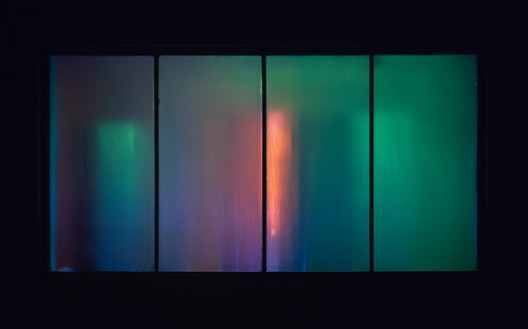
Chen Wei, “New Buildings”, 150x240cm, 2016 (courtesy the artist and ShanghART)
陈维,《新楼》150x240cm,2016(图片提供:艺术家和香格纳画廊)
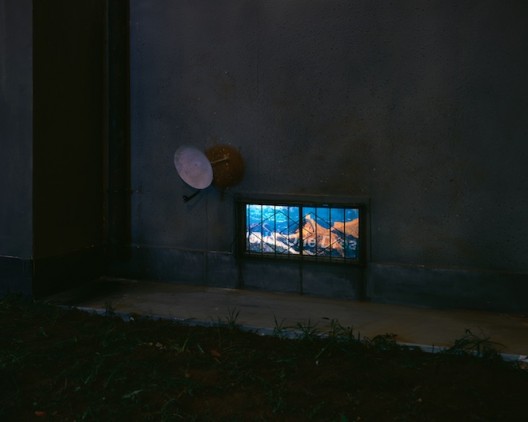
Chen Wei, “One Dream”, 150×187.5cm, 2016 (courtesy the artist and ShanghART)
陈维,《一个世界》,150×187.5cm,2016(图片提供:艺术家和香格纳画廊)
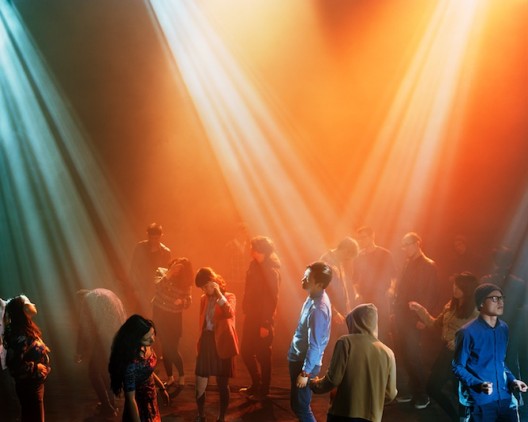
Chen Wei, “In The Waves #1″, 150cmx187.5cm, Archival Inkjet Print, 2013 (image courtesy the artist and ShanghART)
陈维,《在浪里》,150cmx187.5cm,2013(图片提供:艺术家和香格纳画廊)
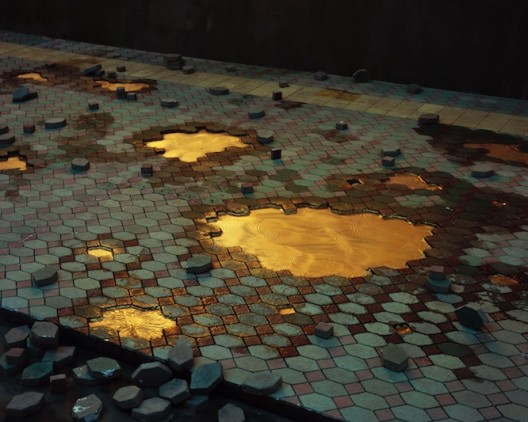
Chen Wei, “Fresh Paint”, 150×187.5cm, 2017 (courtesy the artist and ShanghART)
陈维,《新漆》150×187.5cm,2017(图片提供:艺术家和香格纳画廊)

